Start-Up Piql in Norway to Shake Archive Storage Landscape
With data preservation on WORM microfilm with lifetime of 500 years
By Philippe Nicolas | August 7, 2020 at 2:12 pmFred Moore, industry veteran and storage strategist, alert us about Piql AS a few months ago.
Piql is a recent player operating in the data preservation segment with a radical new model.
It got $50,000 in financial funding in 2015 and then $19 million in 2017.
The first characteristic of Piql is related to its roots and country. The company, started in 2002, is based in Drammen, Norway. Originally the team had the project to bridge the gap between the digital and analog world in the motion picture industry. So the scope was limited to a vertical industry even if it represents a key and significant challenge.
The firm has developed Cinevator, a digital film recorder, to print 100x faster movies vs. market players. This product gained several awards confirming its special role in data preservation in such segment. The recognition went even further with adoption by film labs and post-production companies like Deluxe, Technicolor, Warner Bros., Universal Studios, Dreamworks, Walt Disney and Paramount.
It triggered some considerations for a new technologies to preserve data over long time such new media, access and potentially location. And it appeared to be obvious and logical to test and apply these ideas and technologies to other segments where data preservation is fundamental. The decision was made to consider this digital imaging techniques using photosensitive film as a data storage medium. The immediate effect is the introduction of new format, new media and new drive which never easy as this industry is very conservative.
This new step is confirmed by a R&D effort financed by €25 million from Eurostars and Eureka Programmes to industrialize Piql hardware and software. The R&D activities group Fraunhofer, German research center known in storage for BeeGFS, Norner (polymere institute), IPI (Image Permance Institute, USA). Natural Archives of Sweden plus the Federal Office of Civil Protection and Disaster Assistance and various European technology companies. Piql offers also some preservation services available in Europe, America, Asia and Africa through certified partners.
We all know the difficulty to preserve data and one of these is mandatory technology jumps or migrations as data lifetime is larger then lifetime of the device or media it resides on. Piql approach is different as it eliminates these migrations with data stored on PiqlFilm with certified lifetime of 500 years. This longevity testing has been operated and certified by Norner AS from Norway and IPI from USA following ISO standards 18911, 18924 and 18936. Also media are WORM by nature therefore it is impossible to erase, modify or alter content like some CD, DVD, Blu-ray or optical media. The immutable aspect comes from the support itself and not from any process or control around it. The team also develops search tool to enable easy integration and facilitate usage.
The PiqlFilm is kept within a PiqlBox at your own location or at Piql places. As of today, format can be text, images and audio-visual content.
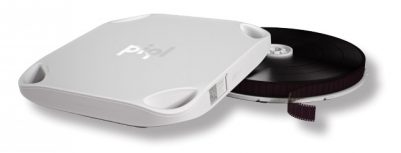
Writing to PiqlFilm is operated with a PiqlWriter. The PiqlReader, for the decoding phase, is open source and stored on the media itself to guarantee future usage. It reminds what Knox Software and later Arkeia did on every tape with its reader present at the beginning of the media. As tapes are mobile by nature, having such capabilities is useful then security enters the game.
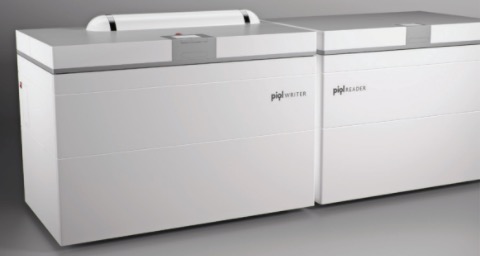
Piql relies on a format based on high-resolution photosensitive film. Data are written as QR-codes to the film with 8.8 million pixels. Any digital camera coupled with compute can decode the film as the software is open source to guarantee lifetime of the read phase.
With the need to access data and the hype around active archive, clearly it is not the sweet spot of Piql. But thanks to the searchable feature, it is easy to locate films and the PiqlBox associated with them.
The workflow below explains the Piql process for both analog and digital data.
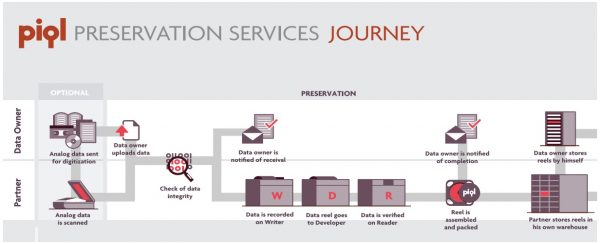
Beyond tape especially around the LTO and Piql, there are some interesting optical approaches with Panasonic freeze-ray or Sony PetaSite Optical Disk Archiving. Sony has acquired Optical Archive in May 2015. Optical Archive, led by former Facebook executive Frank Frankovsky, was a spin off of Facebook. And of course Folio Photonics as a new pioneer in a new optical dynamic.
The table below provided by Piql compares various data storage technology for archiving.
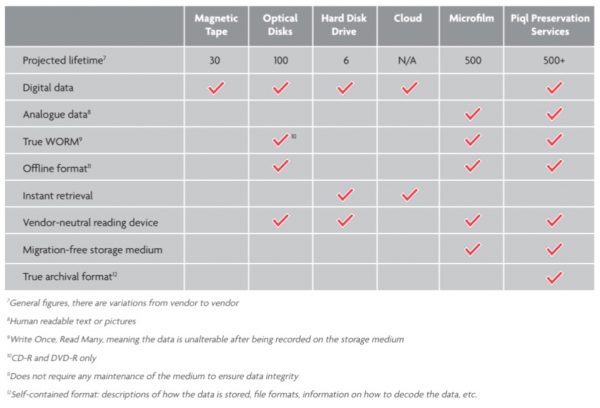
This cold storage approach confirms that among the 3 big contributors to storage TCO i.e data reduction, erasure coding and energy savings, the energy counts for a significant portion. It would be crazy to store archives on powered up systems for a long time. Imagine storing 10PB archives for 10 years or 20 years and pay the energy bill. If you can avoid that cost line or eliminate significant portion of it, you reach a new TCO level. Remember MAID approaches with companies like Copan Systems, Nexsan AutoMAID or others. Copan assets were acquired by SGI in 2010 and we saw later an offering named DMF ZeroWatt Storage still supported by HPE but not available to purchase any longer. Microsoft was working on something, see project Pelican.
Hyperscalers have also made the choice with tape for deep archive as they pick LTO with a clear need to reach a very low TCO. LTO has a clear roadmap bringing interesting capacity directions.
Some hyperscalers continue to dig into storage technologies for the long term, Microsoft doing stuff around glass storage (project Silica), and also remember holographic industry initiatives and more recently of course DNA data storage with companies like Twist Biosciences or Catalog. DNA data storage has the beauty to be inert with a hyper small footprint. Microsoft also started a project on this like a few others as it crystalizes a huge opportunity fundamental for their future.
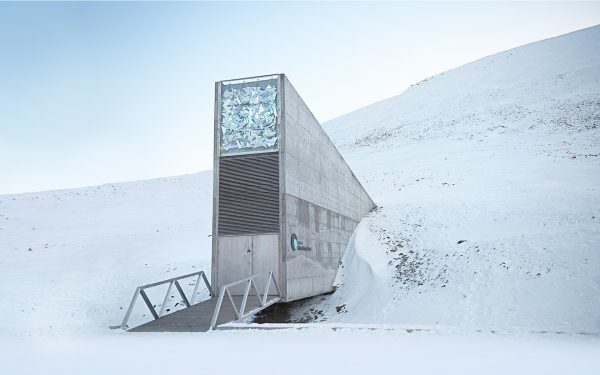
Back to Piql, the firm extends its portfolio with offline and offsite data storage capabilities located in the Svalbard archipelago in the arctic zone beyond 78º north latitude. The offering is named Arctic World Archive (AWA). The site is connected to Internet with high speed optical fiber connections. The place was a mine in Longyearbyen on the Svalbard island.
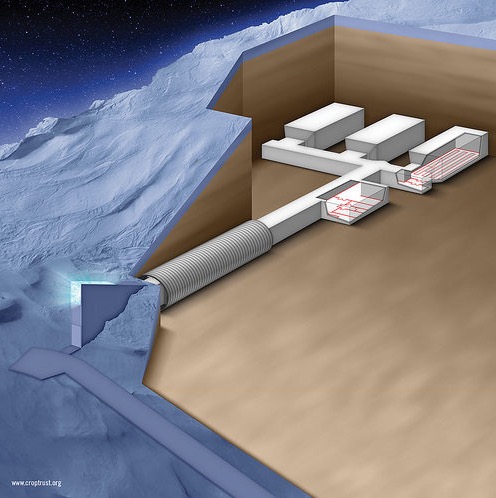
Organic seeds stored there (see the project Crop Trust) as the site is unique for its isolation and temperature conditions. Brazil, Mexico and Norway countries also picked the Nordic service for their national archives. Piql was chosen for EU Archiver Project, European Space Agency as well, even the Vatican Library documents are kept there. More recently for the second time GitHub added 186 heels of PiqlFilms. AWA invites us to think about Mormon Genealogical Archives also stored inside a solid granite mountain at Sandy, Utah.
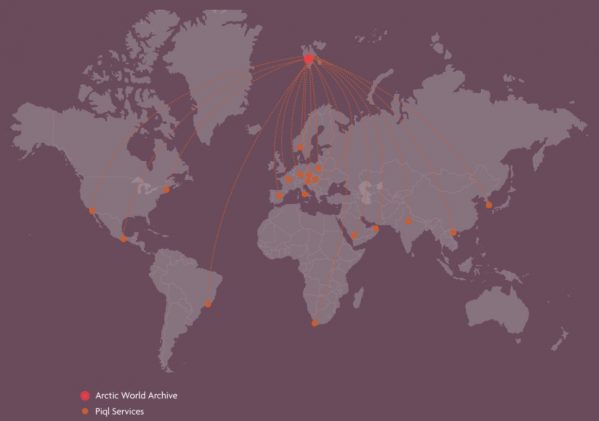














 Subscribe to our free daily newsletter
Subscribe to our free daily newsletter

